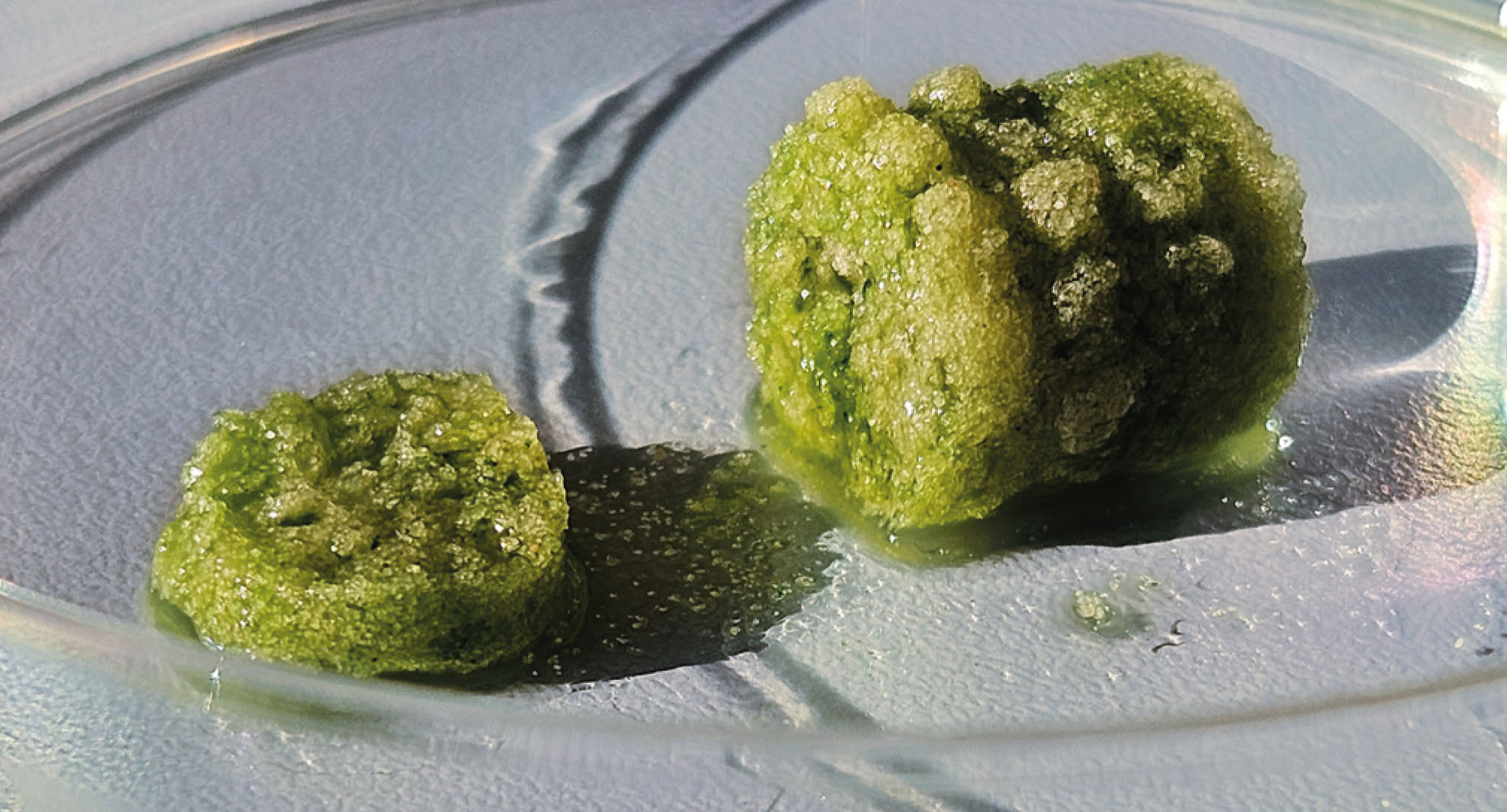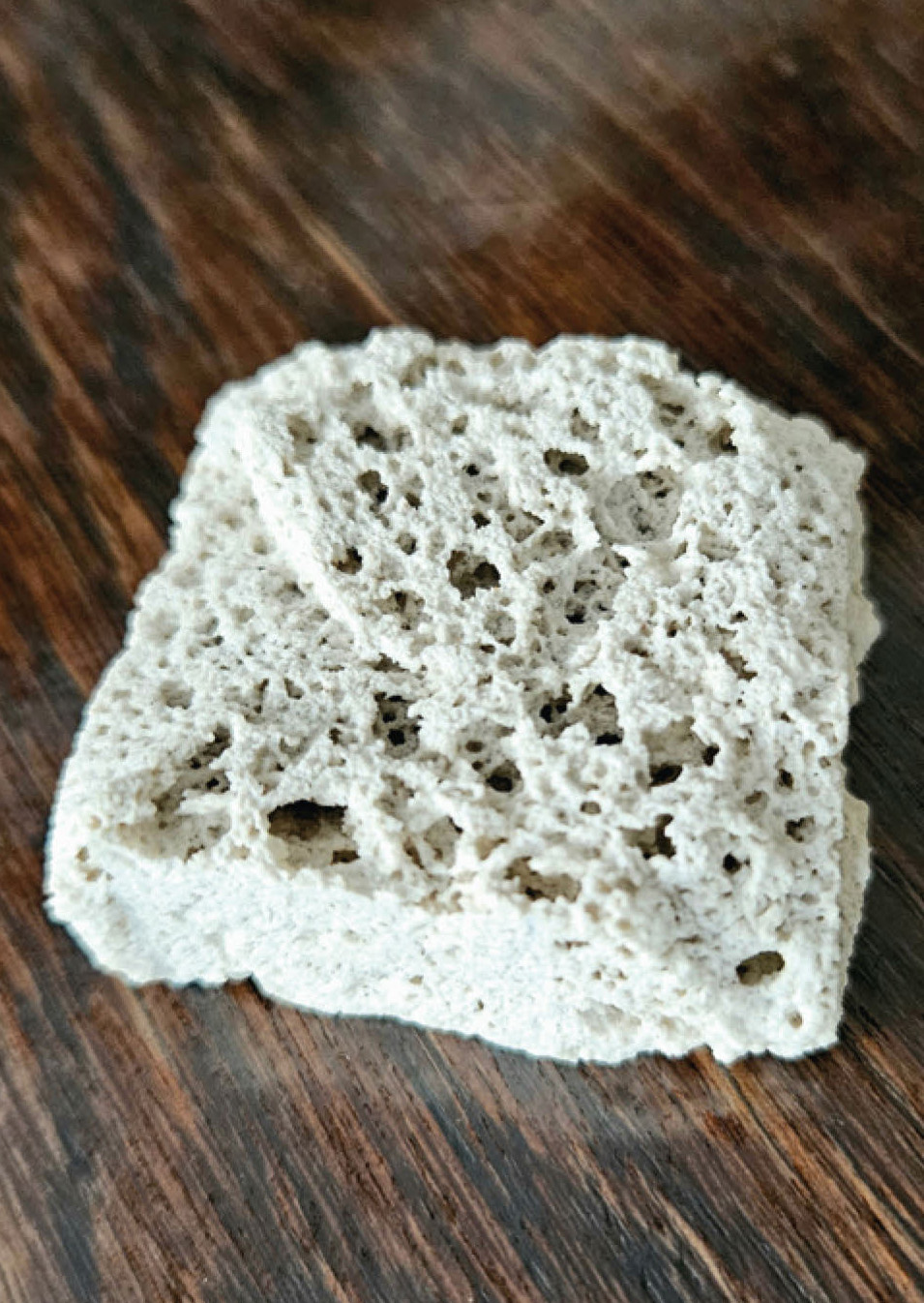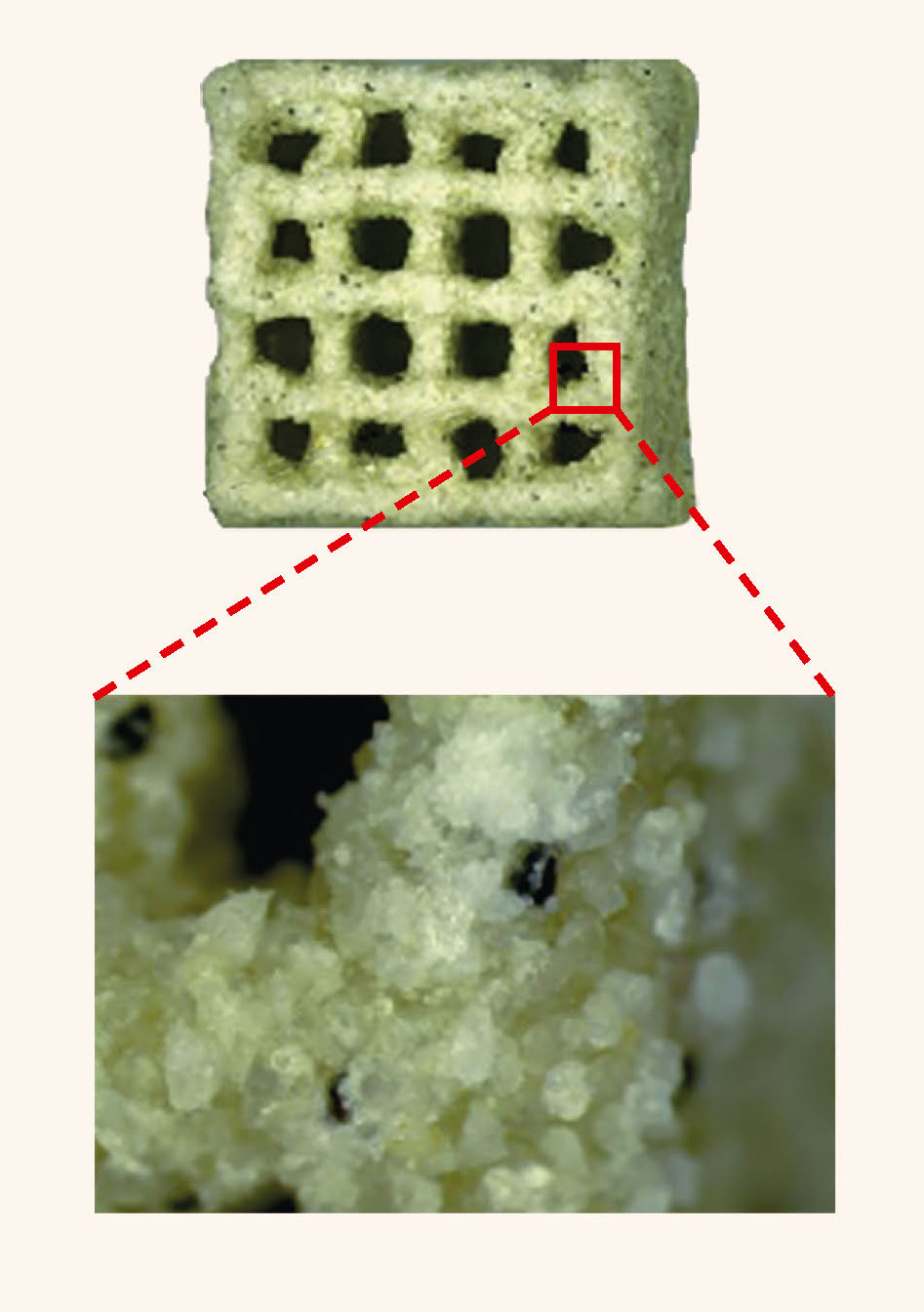
Novel biogenic building and construction materials for CO2 fixation
Current research

Living (building) materials (LBM) are capable of absorbing carbon dioxide (CO2 ) and converting it into carbonate or lime (calcium carbonate, CaCO3 ). The required CO2 can be absorbed from the atmosphere or extracted from industrial processes. Microorganisms contained in the LBM, such as cyanobacteria, use the CO2 for calcium carbonate mineralization (MICP = microbially induced calcium carbonate precipitation). To mineralize and solidify the lime into biogenic structures, access to sufficient light and moisture is a prerequisite for the microorganisms to carry out photosynthesis and thus MICP. The biogenic lime serves as a binder component between selected fillers and aggregates and thus forms the basis for sustainable building and construction materials. Depending on the implementation, they can be used on land and at sea. Space applications may also be possible in the future. These versatile materials and material combinations offer a vast scope of application. They address the essential social issues of greenhouse neutrality in industry, sustainable and circular economy, energy, the environment, and our health.
Development of living building materials
Within the BMBF-funded project “BioCarboMin” (funding code 13XP5162A) and the Fraunhofer-internal project “BioCarboBeton”, it has now been possible to produce such biogenically solidified structural bodies. The IKTS invention of Freeze Foaming but also simple casting technologies or additive manufacturing (AM) have now been utilized for the first time to produce structures that allow the survival of the bacteria. The green coloring caused by chlorophyll proves that the microorganisms in the structure are alive (Figure 1). The chosen materials and the design of the structures as well as the optimized mineralization parameters (exposure, temperature and humidity) enable the living bacteria to form calcium carbonate and even solidified components (Figures 2, 3). Furthermore, it is also possible to produce a type of premix that can be used as a potential “biogenic mortar” after mixing it with a solvent, such as water. It is an aim for the near future to achieve a more targeted survival of microorganisms. Currently, the microorganisms creating the biogenic components die once the mineralization process is complete, turning to non-hazardous biomass. With the developed approach, we aim to obtain an alternative to conventional cement and concrete mixtures, in which tons of CO2 are typically produced from the burning of mined fossil lime. In contrast, based on the presented approach, the novel biogenic building and construction materials with sustainable CO2 fixation contribute to reducing CO2 emissions in production as well as in use.
Supported by
![BMBF_CMYK_Gef_M [Konvertiert]](/en/departments/electronics_microsystems_biomedicine/bio_nanotechnology/biologized_materials_and_structures/cr_novel_biogenic_building_and_construction_materials_for_co2_fixation/jcr:content/contentPar/sectioncomponent_cop/sectionParsys/imagerow_copy_copy/imageComponent1/image.img.jpg/1715690136469/BMBF-gefoerdert-2017-en.jpg)




